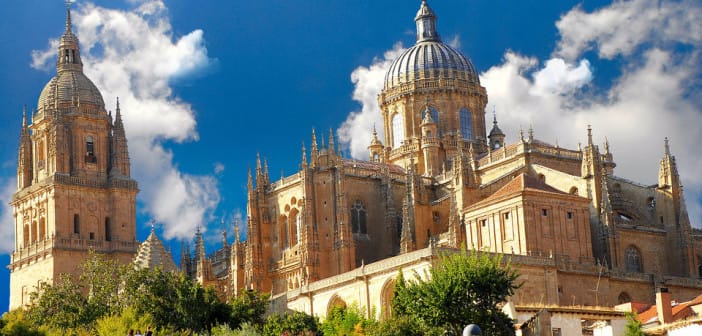900 kilometers of cycling through impressive landscapes and thousands of years of history X
Although used from the prehistoric era, the Via de la Plata was most famously used as a Roman road along the Iberian Peninsula connecting Rome to the metal mines in northern Spain. In the 2000 years since the Romans, countless people have followed this same route, from merchants, soldiers, and pilgrims to cyclists (a newer, although increasingly, popular group of travelers on the route).
The Via de la Plata (or, more accurately, the Ruta de la Plata) runs from Seville in the south to Gijon in the north through thousands of years of history. Along the way, you pass through some of the most beautiful places in Spain (such as Caceres, Merida Salamanca, Zamorra, and Leon). This video gives you an idea of what you may come across on the way.
The places on the route have joined forces to maintain and publicize the Via de la Plata. As a cyclist you can either choose to ride on the paved or unpaved option, the latter requires a mountain bike with a luggage carrier and bike bags.
The paved route is divided into twelve stages between 53 and 102 kilometers, but of course, you can determine your own stages. On the Via de la Plata website there is a list of accommodations.
There are maps of each of the twelve stages, but it is much more convenient to put the route on a GPS. The route attempts to keep cyclist off of busy roads as much as possible, but there are a few parts where that was unavoidable and you will have to endure some busier roads as well. The majority of the route follows the N630, the old national road connecting Seville and Gijon (one of the longest roads in Spain), which has lost the majority of its traffic due to the large north-south freeway system. Get an idea of what you will experience by watching this video.
Some people use the Via de la Plata to cycle from Seville to Santiago de Compostela, meaning they turn west when they reach the Camino Frances. Unfortunately, these people miss out on getting the most important stamp in their Via de la Plata booklet – that of Gijon.
The Via de la Plata is not known as being Spain’s most challenging cycling route. Spain is rarely flat, so you will be met by some high mountains in the northern parts of the route. After surpassing this feat, however, your end goal will be in view and you will look back on those moments with satisfaction knowing your intimately experienced some of the most beautiful areas of Spain. All of the information can be found on the Ruta Via de la Plata website, which also has an English version. The Via de la Plata app is also extremely handy and can be found in Google Play or the Apple App Store under La Ruta and Bici.

